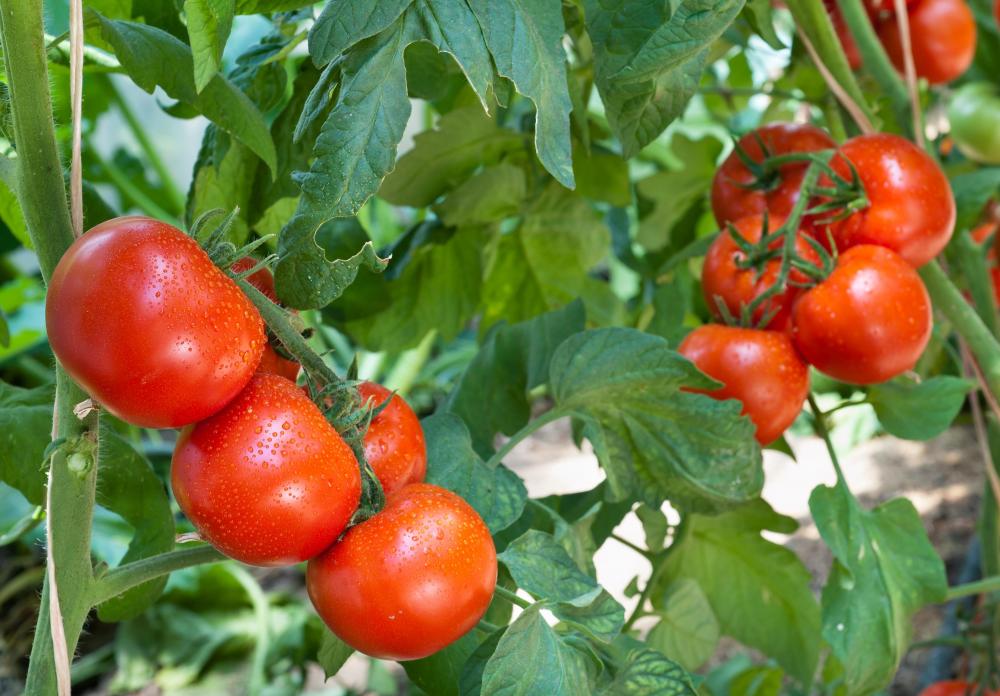At WiseGEEK, we're committed to delivering accurate, trustworthy information. Our expert-authored content is rigorously fact-checked and sourced from credible authorities. Discover how we uphold the highest standards in providing you with reliable knowledge.
What is Vertical Gardening?
Vertical gardening is a gardening technique that utilizes various resources to allow plants to extend upward rather than grow along the surface of the garden. In some cases, no support frame of any kind is required, as the plant naturally grows upward. However, other plants such as ivy and some vegetables require the presence of stakes, cages, or trellises in order grow vertically.
One of the more common examples of vertical gardening for decorative purposes is the use of ivy in a landscaping design. Ivy is a natural runner and will easily adhere to a number of difference surfaces. It is possible to utilize a vertical garden wall as the medium for the ivy, allowing the vines to run across and up the wall. If a vertical garden wall is not available, it is possible to use fencing, a trellis or even a series of poles to provide a horizontal running track for the vines.

In terms of growing food plants in a vertical garden, cucumber, bell pepper, and tomato plants are excellent examples of vertical gardening. A simple wire cylinder known as a tomato cage works very well for all three. The structure of the cage makes it possible to train the plants as they grow to wrap around the wires, providing the stalks with additional support for the heavier produce. Because the plants are supported by a horizontal structure, it is much easier to harvest the produce.

Beans are another example of vegetables to include in vertical gardens. Along with running pole beans up a stake or trellis, it is also possible to make use of corn stalks. Since the stalks tend to be strong, the vines of the bean plants can be allowed to run up the stalks, effectively utilizing the same garden space to produce two different types of vegetables.

As with any type of garden effort, vertical gardening requires choosing a location with plenty of natural sunlight, rich soil, and a nearby water source. Setting up a nearby vertical garden shed can house all the elements necessary to train creeping plants upward, such as a selection of trellises, stakes, and cages of different sizes. Twine to tie vines in place as they run up and around the vertical support system is also a good idea. Standard gardening equipment, such as hoes, fertilizing equipment, and work gloves are also good additions to the contents of the vertical gardening shed.
To add style to the practical function of the vertical garden, consider the addition of a metal arbor. Vines can be trained to run up and across the graceful angles of the arbor, creating a pleasant entrance to your suncast vertical garden.
AS FEATURED ON:
AS FEATURED ON:













Discussion Comments
What comes as a surprise to many people, me included, is that you can grow larger melons such as cantaloupes and watermelons in a vertical garden. The fruit gets heavy as it grows, so you have to devise a way to support the melons once they reach a certain weight, but this can be done.
You can do a little research and find some of the best ways to support melons in vertical gardens, so they don't fall off the vines before they are ripe and ready to be eaten.
Ivy makes a wonderful backdrop for a vertical garden. I have a friend who has ivy growing on a large trellis wall. The ivy, lush and green, covers the wall. Then throughout the wall at various places she has put in flower pots containing different flowers and vegetables. The flowering plants add color to the wall. The pots are easily inserted and extracted as needed.
When the growing season is over for one plant she simply removes the pot and inserts another pot. And each plant has its own growing environment, so mixing different plants in the same bed of soil is not a concern.
@Mobilian33 - You can use virtually any material to form the pockets you mentioned for growing plants and vegetables on a structure's wall.
I have used old burlap sacks attached to wood pieces that I nailed to a barn door. The sacks hold the soil and the wood pieces give the sacks support, so they remain stretched out and do not release the soil.
You can grow plants on the side of your barn, garage or another outside building just by creating a space where you can contain the soil. You can buy these soil containing devices called pockets from the store and attach them to a wall. Then you just have to fill them with soil and put in the plants you want to grow.
Post your comments